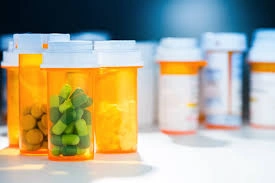Acamprosate
Overview
In 2004, the US Food and Drug Administration authorized the use of acamprosate) for therapeutic purposes of alcoholism. It is recommended for maintaining alcohol abstinence rather than treating alcohol withdrawal. Acamprosate needs to be used in combination with a program that offers assistance from groups. treatment and counseling in order to have a significant impact on the chronically drunk person’s drinking habits.
Information about Dosing
When the patient reaches abstinence during alcohol detoxification, Acamprosate treatment should start as soon as possible. It is advised to begin taking Acamprosate with two 333 mg pills, or 666 mg, three times a day.
Although Acamprosate may be taken without regard to food, taking it with food might lessen any nauseating adverse effects and upset stomach, and the mealtime routine might serve as a useful reminder to take the medicine.
Beyond the first dose, there is often no need to raise the dosage. Three tablets of 333 mg, a lesser dose per day, could work well for some people. Individuals with mild renal impairment shouldn’t use more than 333 mg three times per day, and Acamprosate should not be used by anyone who has significant renal impairment.
Typical Side Effects
The most common adverse effect linked to Acamprosate is diarrhea. Other, less common adverse effects were mentioned.
Symptoms of Acamprosate include anxiety, sadness, nausea, constipation, gas, and stomach discomfort. Patients usually become less sensitive to the medicine as a result of these adverse effects. It is improbable that any of these adverse consequences are connected to the symptoms of alcohol withdrawal. Acamprosate used as prescribed in dosages has not been shown to exhibit any signs of withdrawal symptoms.
Adverse Events and Safety Measures
Similar to other centrally acting drugs, Acamprosate may cause cognitive and motor impairments, particularly in the early stages of the therapeutic process. When used with other medications, the effects of Acamprosate may become more noticeable. Drugs with a central acting mechanism.
- Patients are advised to use care while using equipment or driving when assuming Acamprosate.
- When a patient relapses and starts drinking again, they should let their doctor know. Patients must continue.
- Taking Acamprosate without first speaking to their doctor. Unlike Antabuse, Acamprosate does not cause a negative effect when used with alcohol.
- Patients receiving Acamprosate exhibited significantly greater rates of suicidal thoughts and attempts during clinical studies compared to those in the placebo group (sugar tablets).
- Relapses into alcohol use were a factor in several of these instances. Alcoholism and depression are often linked, and suicide risk is increased in those who are suffering from untreated depression. In the first stages of treatment, patients have to be observed.
- keep an eye out for clinical depressive symptoms, particularly suicidal thoughts and actions.
Utilization during pregnancy and nursing: Category C
Pregnant women have not participated in studies to evaluate the safety of Acamprosate. In animal investigations, it was discovered that Acamprosate causes fetal abnormalities. Acamprosate ‘s impact on the developing Unknown human fetuses exist. During pregnancy, Acamprosate should not be taken unless the patient’s doctor determines that the advantages of the therapy exceed the drawbacks. The excretion of Acamprosate in human breast milk is unknown. Given that the breast excretes a lot of medications breastfeeding moms shouldn’t consume Acamprosate milk. Women who use Acamprosate should always let their doctor know if they intend to breastfeed.
Potential Interactions with Drugs
With regard to Acamprosate, there are no known major medication interactions. Acamprosate is mostly eliminated via the kidneys and does not go through the liver’s metabolic process.
- Alcohol use while taking Acamprosate does not change the amounts or elimination of any material.
- Acamprosate does not create opioids and is not an opiate (narcotic) antagonist.
- the same way that naltrexone does. Neither sleep aids nor anti-anxiety drugs (such as benzodiazepines like Valium) interact with Acamprosate.
overindulgence
Diarrhea was the only side effect in the few documented instances of acute Acamprosate overdose. Still, the assumption that an Acamprosate overdose is always harmless should not be made. The degree of toxicity is determined by the quantity consumed, the individual’s age and weight, and whether they have taken any other drugs. It is uncertain whether a youngster who overdoses on Acamprosate is safe.
Treating any suspected overdose as an emergency is imperative. The individual has to be brought to the emergency space for care and observation. It is advisable to bring the prescription bottle of medicine (as well as any additional medication that may have been taken in excess) since the information on the label may be useful in helping the treating physician figure out how many tablets the patient has taken.
Particular Points to Remember
• Acamprosate is typically taken three times per day, or as your doctor instructs. If a dosage is missed, consider it as quickly as possible. If the next dosage is almost due, skip the one you missed and resume your usual dosage regimen. Avoid taking two doses at once.
• Research indicates that Acamprosate only helps patients maintain their abstinence when their overall care involves group assistance with counseling and treatment.
• Don’t give up if you relapse; talk to your doctor, therapist, or counselor about your drinking. As instructed, keep taking Acamprosate, and get in touch with your doctor very far away.
• Speak with your doctor if you have any depressive symptoms, especially if you’re thinking about taking your own life. instantly consult a therapist or counselor.
• Thinking and coordination may be affected by Acamprosate, particularly in the early stages of treatment. The consequences of when used in conjunction with other centrally acting drugs, such as booze. When driving or doing other duties that call for awareness, proceed with care and be aware of the potential threats of operating and maneuvering machines.
• Keep the medicine out of direct sunlight and dampness, in the light-resistant container that came with it. Warmth and moisture may hasten the disintegration of your drug, causing it to lose its medicinal consequences.
• Make sure kids can’t get to your medicine.




